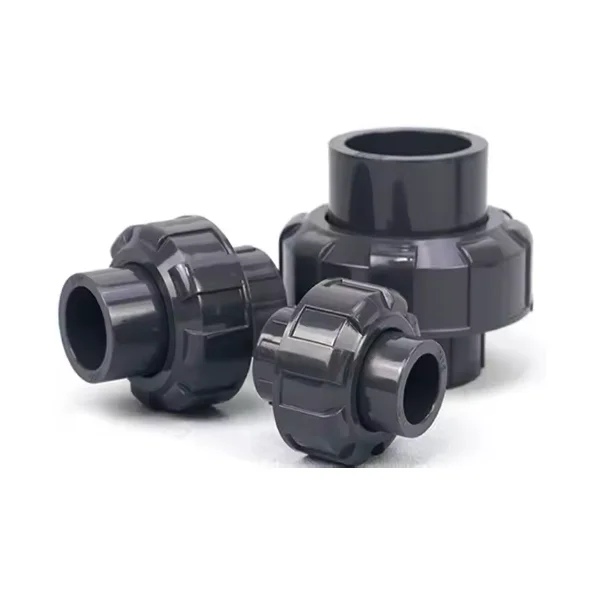What Are UPVC Pipes and HDPE Pipes?
2025-08-29
In today’s rapidly growing construction and utility sectors, choosing the right piping material is critical for ensuring durability, efficiency, and long-term performance. Among the most widely used options are UPVC pipes and HDPE pipes . Each type offers unique features that make it suitable for various applications, from water supply and irrigation to sewage and industrial systems. This comprehensive guide will explore what UPVC pipes and HDPE pipes are, compare their benefits, discuss common applications, provide detailed technical specifications, and answer frequently asked questions to help you make the best decision for your project.
Understanding UPVC Pipes and HDPE Pipes
What Are UPVC Pipes?
UPVC pipes are made from unplasticized polyvinyl chloride, a lightweight yet rigid material known for its high strength, excellent corrosion resistance, and cost-effectiveness. Unlike traditional PVC pipes, UPVC pipes do not contain plasticizers, making them more durable and suitable for environments exposed to chemical and weather-related stress.
Key Advantages of UPVC Pipes:
-
Corrosion and Chemical Resistance: Resistant to most acids, alkalis, and salts, making them ideal for plumbing and industrial fluid systems.
-
Lightweight and Easy Installation: Simplifies transportation and handling, reducing installation costs.
-
Long Service Life: Typically lasts 50+ years under normal conditions.
-
Smooth Internal Surface: Reduces friction losses and prevents scaling.
-
Eco-Friendly Material: Non-toxic and recyclable, making it safe for potable water systems.
Applications of UPVC Pipes:
-
Residential and commercial plumbing
-
Cold water distribution
-
Irrigation and agricultural pipelines
-
Industrial chemical transport
-
Drainage and sewage systems
What Are HDPE Pipes?
HDPE pipes are made from high-density polyethylene, a flexible thermoplastic material with exceptional impact strength, leak-proof properties, and resistance to environmental stress cracking. HDPE pipes are typically manufactured using an extrusion process, making them seamless and extremely durable even under high-pressure conditions.
Key Advantages of HDPE Pipes:
-
High Flexibility and Toughness: Performs exceptionally well under heavy loads and high-pressure applications.
-
Leak-Free Joints: Joined using heat fusion techniques, ensuring 100% leak-proof connections.
-
Resistance to UV Rays and Chemicals: Suitable for outdoor installations and industrial environments.
-
Lightweight yet Strong: Easier to transport and install compared to metal pipes.
-
Extended Service Life: Can last 50+ years, even in extreme weather conditions.
Applications of HDPE Pipes:
-
Potable water supply
-
Gas distribution
-
Sewage and wastewater treatment
-
Agricultural irrigation
-
Mining and industrial slurry transport
Technical Specifications and Comparison
Choosing between UPVC pipes and HDPE pipes depends on the specific project requirements. Below is a detailed technical comparison:
| Property | UPVC Pipes | HDPE Pipes |
|---|---|---|
| Material | Unplasticized Polyvinyl Chloride | High-Density Polyethylene |
| Flexibility | Rigid structure, limited flexibility | Highly flexible, ideal for curved layouts |
| Temperature Range | 0°C to 60°C | -40°C to 60°C |
| Chemical Resistance | Excellent | Excellent |
| Installation | Solvent cement jointing | Heat fusion or mechanical fittings |
| Weight | Lightweight | Very lightweight |
| Service Life | 50+ years | 50+ years |
| Cost | More affordable | Slightly higher upfront cost |
| Best Use Cases | Cold water supply, drainage, irrigation | Gas, potable water, high-pressure lines |
This table highlights that while UPVC pipes are preferred for rigid and low-cost applications, HDPE pipes excel in projects requiring flexibility, high strength, and leak-proof performance.
How to Choose Between UPVC and HDPE Pipes
Selecting the right pipe material depends on several critical factors, including application, pressure requirements, environmental conditions, and budget.
Define the Application
-
For residential plumbing and cold water supply, UPVC pipes are often the best choice due to their affordability and smooth internal surface.
-
For gas pipelines, industrial applications, and high-pressure water supply, HDPE pipes are more suitable because of their superior flexibility and fusion-welded joints.
Assess Environmental Conditions
-
Chemical Exposure: Both UPVC and HDPE resist chemical corrosion, but HDPE performs better in environments involving aggressive solvents or prolonged UV exposure.
-
Temperature Variations: HDPE pipes withstand freezing temperatures better, while UPVC performs well in moderate climates.
Evaluate Pressure Requirements
-
UPVC pipes work well in low to medium pressure systems.
-
HDPE pipes are engineered for high-pressure applications, making them ideal for large-scale infrastructure.
Consider Installation Methods
-
If rapid installation is required with minimal tools, UPVC pipes with solvent cement joints offer convenience.
-
If a completely leak-free system is necessary, HDPE’s heat-fusion welding method ensures maximum reliability.
FAQs About UPVC Pipes and HDPE Pipes
Q1: Are UPVC pipes suitable for drinking water supply?
A1: Yes, UPVC pipes are safe for potable water applications as they are non-toxic, corrosion-resistant, and free from harmful plasticizers. Their smooth inner walls also prevent bacterial growth, ensuring clean water delivery.
Q2: How long do HDPE pipes last compared to UPVC pipes?
A2: Both UPVC and HDPE pipes have a service life exceeding 50 years when installed and maintained properly. However, HDPE pipes tend to perform better in harsh outdoor conditions and extreme temperatures due to their flexibility and UV resistance.
Choosing between UPVC pipes and HDPE pipes depends on your project’s specific needs. If you require a cost-effective solution for cold water, drainage, or basic irrigation, UPVC pipes deliver excellent value. However, for high-pressure applications, gas supply lines, or outdoor installations, HDPE pipes provide unmatched durability and flexibility.
At epoch, we specialize in providing high-quality UPVC and HDPE pipes designed to meet international standards. Whether you are working on a residential plumbing project or a large-scale industrial installation, we offer products that combine performance, reliability, and long-lasting value.
For more information, contact us today to discuss your project requirements and find the perfect piping solution.



